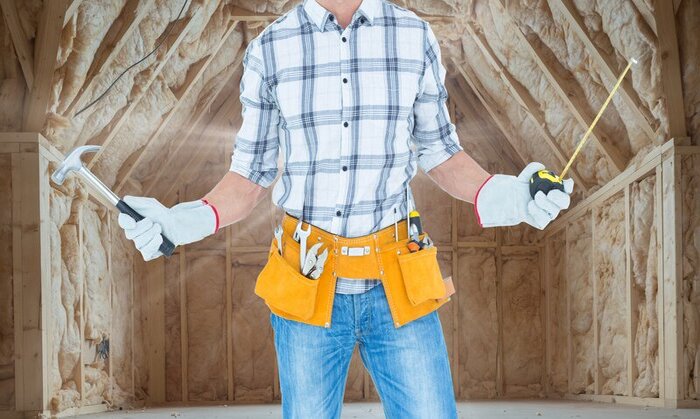
Attics can pose a safety hazard, especially if your attic is unfinished, insulation is outdated or damaged, or mold, toxins, or other contaminants pose a problem. Therefore, attic safety is the priority whenever you’re inspecting or working in an attic. When in doubt, always contact a licensed attic and insulation contractor to protect the safety of your home and its occupants.
Here are seven tips for prioritizing a safe attic experience and protecting your home from the possible dangers lurking in the attic.
Attics are known for containing contaminants ranging from asbestos (in really old homes that haven’t been updated) to mold and mildew or airborne fiberglass fibers from standard insulation batts. The best way to protect yourself is by wearing:
Safety glasses or goggles
If your home is older or rundown, consider hiring a licensed insulation contractor to inspect the attic before you go in. On the off chance, the insulation hasn’t been updated since the 1980s, you may be dealing with asbestos, which is highly toxic.
Sometimes, attics house “ringers,” or nails that penetrated through the roofing materials. Leaving your head exposed could result in puncture wounds or serious scrapes/cuts.
FYI: If you notice exposed nails that penetrated the roofing underlayments, contact a local roofing contractor. These are a leading cause of roof leaks, and any moisture penetration through the roof negatively impacts attic insulation and the attic environment.
Unfinished attics can have weak places, especially in an older home where unaddressed termite or mold/mildew issues weaken the structural materials. You don’t want to break through - or fall through - a weak attic floor. In our post, Is Your Unfinished Attic Unsafe?, we go over some of the signs an unfinished attic may not be safe and how to take precautions.
Some of the warning signs include:
If these things are true for your attic, a professional inspection may be the best first step to make sure you don’t injure yourself during the inspection.
One of our rules of thumb is: Be careful what you store in the attic. Sometimes people use their attics to store rarely used chemicals or old paints to keep them out of the way. Unfortunately, these can off-gas and the resulting vapors are toxic. While they can lead to poor interior air quality throughout the home, the attic may have a larger concentration of fumes, which can damage your eyes, airways, or lungs.
If you’ve purchased a new home, take a peek into the attic space to get an idea of what’s still up there. If you see cans or bottles of suspicious liquids, it’s probably best to contact a licensed attic cleanup crew who can safely remove them without exposing you or your household to any more toxic fumes.
Insulation is powerful when left alone and vulnerable when stepped on, squashed, or walked on. Do your best to avoid disturbing insulation. If you notice insulation is already disturbed, or you notice signs of obvious damage, gaps, or tears, it’s time to replace it with a new layer.
Attics are a pest’s dream. They are completely protected from the elements as well as from most predators. That’s why attics are a favorite hidey-hole for all kinds of creatures, including stinging insects like bees or wasps. If you hear or see a bee, wasp, or yellow jacket fly by, exit the attic slowly and calmly. It’s a good sign they’ve started a nest in the attic, and that requires professional attic pest elimination.
Also, be wary of other potential attic pests that include:
There is a skill level and awareness involved when walking around an attic. If you aren’t sure if your attic is finished or not, or you’ve never owned a home with an attic before, we recommend scheduling an inspection with a licensed attic contractor. We’ll be happy to show you around, explain what’s what, and help you learn hands-on attic safety so you feel more comfortable engaging in the attic on your own as needed.
Regular DIY attic inspections are a smart way to keep an eye on things like potential leaks, poor attic ventilation, aged or damaged insulation, pest issues, and so on. A healthy attic is essential to your home’s energy efficiency, comfort, and indoor air quality.
The technicians here at Attic Solutions have inspected, cleaned, repaired, and maintained Bay Area attics and crawl spaces for more than a decade. Contact us to schedule an inspection or to address your attic safety concerns.